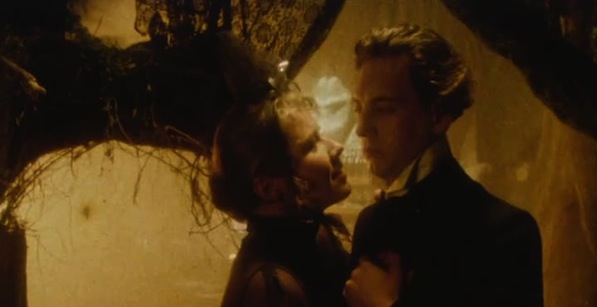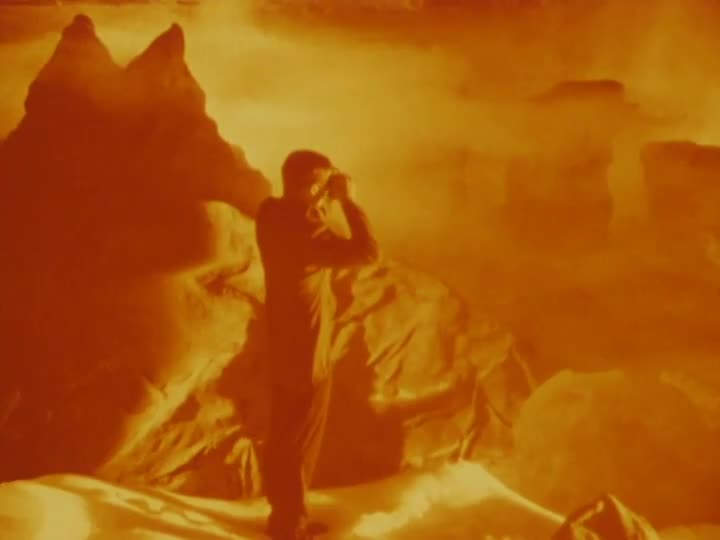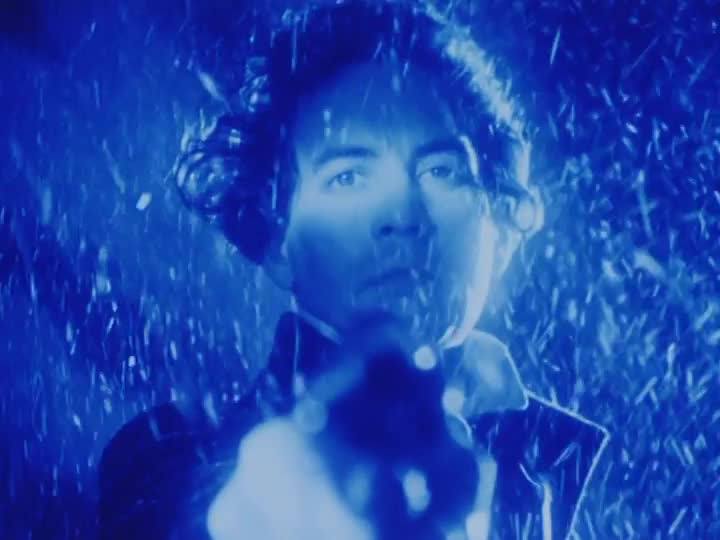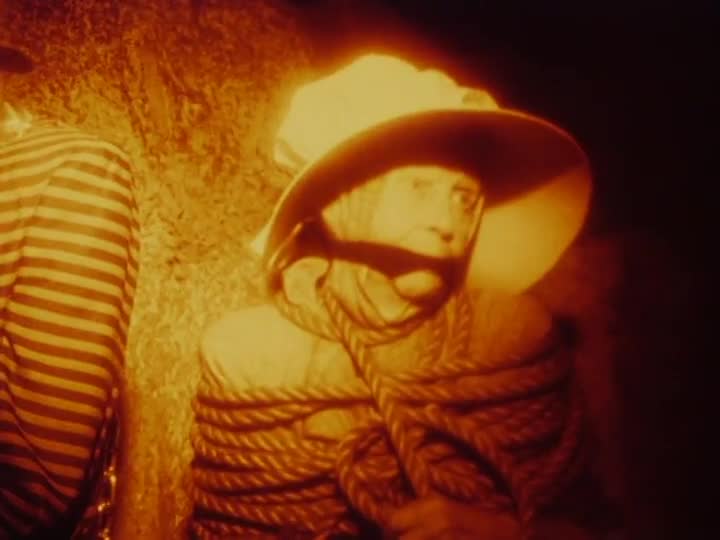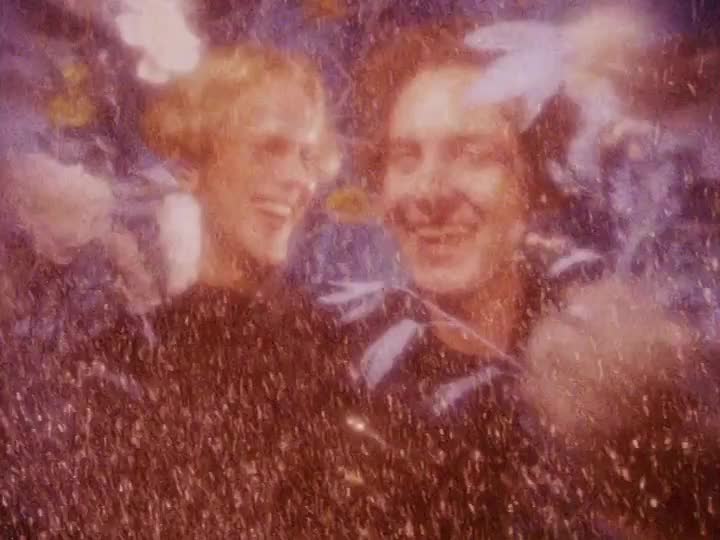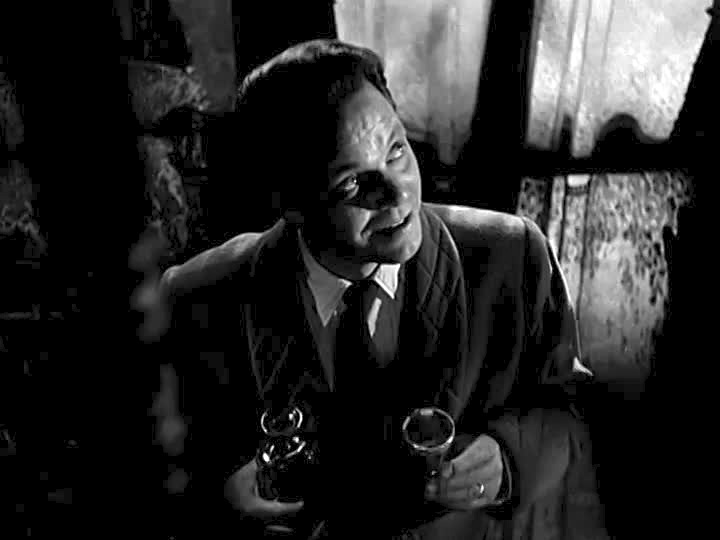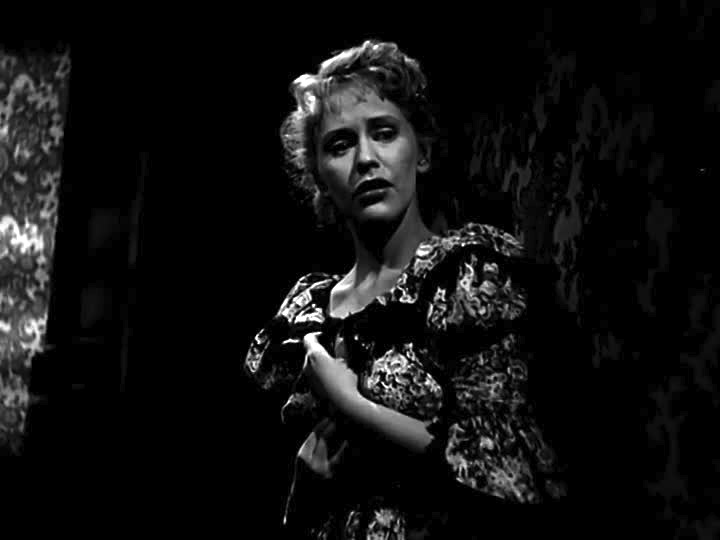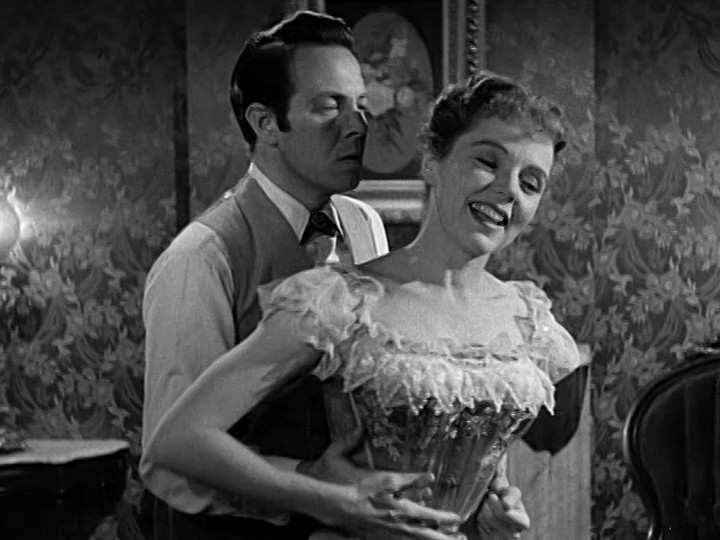Guy Maddin’s Careful, which opens with a title card exhorting the reader to go out in search of “something hidden,” is a Freudian fantasia, complete with Oedipus and Electra urges and self-mutilation, in an alpine setting where, we’re told, the slightest sound, of pleasure or pain, could unleash pent-up snows in an avalanche of destruction. A local “swan-feeder” has his eye poked out by his mother’s unpinned brooch; his sons, Germanic-looking young men with apple cheeks, center-parted hair and knee socks, attend school at the “Butler Gymnasium,” a place of steam-filled group showers and corporal punishment (“feel free to cane us, mother”). All this deliberately old-world drama is filmed in a style that pastiches Maddin’s perpetual inspiration, silent and early sound cinema. He uses Vaseline-smeared edges and double exposures; backlit mountaineers hoist themselves against matte-painted backgrounds. High altitudes are often shot in tinted black and white (blue for the snowy peaks; green for the hidden caves), and the valley and interiors are done in vivid, ungraded color and dreamy, gauzy filters.
A pleasurably self-conscious retro style, and post-psychoanalytic folk content, are still the traits most associated with Maddin’s filmography, twenty years on. But the role of editing in Careful’s roundelay of intergenerational sexual pathology is less obviously evident. Jump-cuts, simulating the jump of celluloid in a sprocket, and the hiss and crackle sometimes added to the soundtrack mix, mostly contribute to the found-artifact texture. Still, the way Maddin assembles these elements does much to reinforce their power.
Careful opens with a wild montage, shot in an Expressionist style, with extreme angles, long shadows and dry-ice smoke. Breathless expository narration is matched with a string of lurid images, tinted a throbbing red: children, bound and gagged to prevent their careless noise; hearty hikers plagued by lightning, slips and falls to death; withered old crones hunching over the graves of the beautiful young dead. There’s no sense of space or time linking these shots: they match the narrator’s words, sometimes quite literally, and the timing of the cuts is dictated by the rhythm of his speech; many shots are staged on a bare set, with no visual context. Even when consecutive shots feature the same characters, there’s no attempt to establish continuous movement through coherent space. The images are thrown at the viewer, one after another, as if in a panic, linked by nothing but a sense of acute anxiety.
Throughout Careful, characters are overwhelmed by their overheated impulses, in dream sequences handled as similar rapid-fire montages of discrete shots. But what’s interesting is how this neurotic editing pattern seems to govern even the linear narrative of the film. Establishing exterior shots are practically nonexistent (which makes sense given the obviously soundstage-bound production), and transitions are accomplished by quick cuts to black, and occasionally intertitles, so that single sequences flow into each other with the abruptness of the single shots in the montages. For dialogue scenes, the characters are either posed statically in two-shots, or shot in conspicuously tight close-ups. I don’t think there’s a single over-the-shoulder shot in the entire movie. The camera barely ever moves, and the academy-ratio frame lets in little visual background. There’s hardly room to breathe—the entire film seems to take place in a cramped, overstuffed mental hothouse.
To see how a similarly fraught psychological state might be conveyed in a more conventionally objective narrative mode, let’s look at Fritz Lang’s House By the River, the subject of a Keyframe scene analysis by Glenn Heath, Jr. The film has two protagonists. When one, the mediocre novelist Stephen Byrne (Louis Hayward) murders his maid, Emily (Dorothy Patrick), after a bungled attempted seduction, he manipulates the other, game-legged brother John (Lee Bowman), into helping him dispose of the body, playing on his concern for Stephen’s wife Marjorie (Jane Wyatt), with whom he is obviously besotted. The two drop the body into the river that runs behind Stephen’s house, despite his neighbor’s earlier complaints about the tidal patterns that never seem to wash refuse out to sea; after the body’s inevitable discovery, they spend the rest of the film maneuvering around double-edged clues. It’s one of Lang’s characteristic entrapment plots, in which characters are ensnared by a world that seems to conspire with their most dangerous desires.
Lang, who actually was a German Expressionist, integrates the same sort of dramatic angles and warning shadows which Maddin lovingly appropriates and enlarges in Careful. It’s worth looking at the murder, which occurs very early in the film, before the exposition is even out of the way.
Stephen enters his darkened house, and the camera tracks in on him as he approaches a table tucked in below his main staircase. He lights a candle on the table, regards himself in the mirror, and pours a drink; Lang matches on the action of the drinking to a wider, lower-angle profile shot, from which we see Stephen finish the drink, refill the glass, and quickly blow out the candle as he hears the door creak upstairs (we know the maid, Emily, has been bathing in the upstairs bathroom while Marjorie is out). Cut to a low-angle shot of the wall at the darkened top of the stairs, opposite the bathroom door, which opens, the light from inside the room casting the shadow of Emily’s silhouette against the wall like the revelation of desire. The next cut is to a high-angle shot of Stephen, gazing up, his expression predatory, and then to a low-angle shot of Emily, cut off from the waist up, descending the staircase, her bare legs peeking through her dressing-gown; this pattern repeats once, before a noise from Stephen breaks the spell, and Emily gasps in a wide two-shot.
A few scenes later, having dumped Emily’s body, Stephen again enters the dark house, in the same wide shot moving in to the same waist-up framing as he approaches the same table. He again looks at himself in the mirror, this time using the match for illumination instead of lighting the candle, and assessing a much more haggard visage appearance; there isn’t time to pour a drink before he shakes the candle out, startled by the same sound of the bathroom door creaking. Here Lang cuts, again, to a shadow at the top of the stairs, a high-angle shot of Stephen staring up, and a low-angle shot of legs descending. This time, the spell is broken much more quickly by a noise from Stephen (the woman is his wife). Here, not only is the pattern rushed, and the performance panicked, but the context puts a very different spin on the same shots: the shadow at the top of the stairs, this time, is a ghost, and Stephen is not a voyeur peeking up a woman’s skirt, but frightened and submissive before the specter.
The very conspicuous repetition of the shot pattern, here, suggests how the trauma of the first ten minutes will haunt the rest of the movie; it’s also a pretty textbook-Freudian suggestion of repetition compulsion. Despite his high-handed arrogance, Stephen’s behavior over the course of the film is characterized by psychological scab-picking. Returning to the river, he finds Emily’s body in the reeds, and in trying to sink her ends up sending her floating back to civilization. Taking a fan’s advice to “write what you know,” he begins a novel which will serve as a confession. An auditory device Lang utilizes in the second stairway scene—the ominous repetition of a sound motif associated with a character thought to be dead—triggers the film’s climax, which involves a final apparition at the top of the stairs. But the shot patterns from the first reel have already prepared us to expect the return of the repressed.

